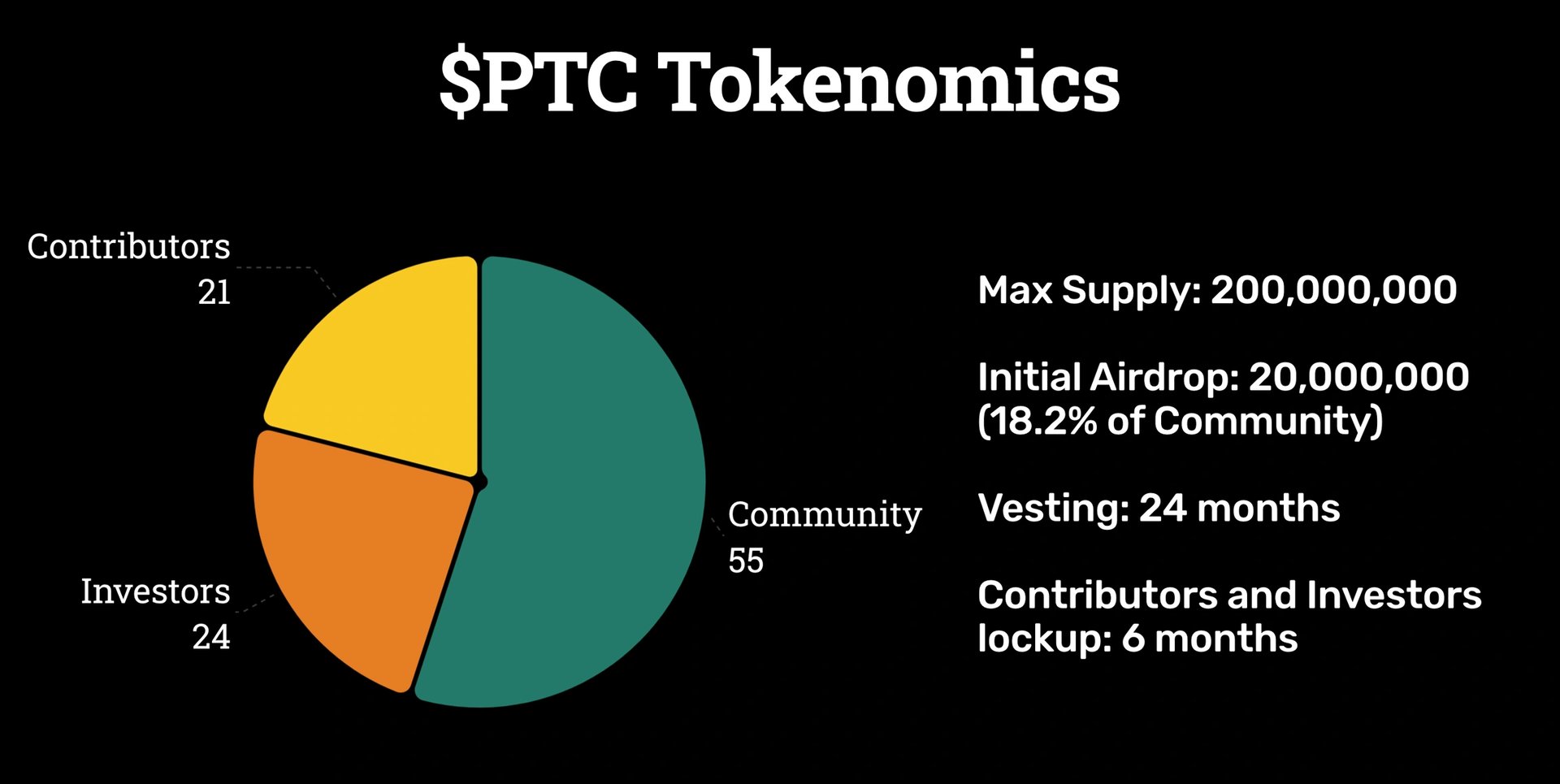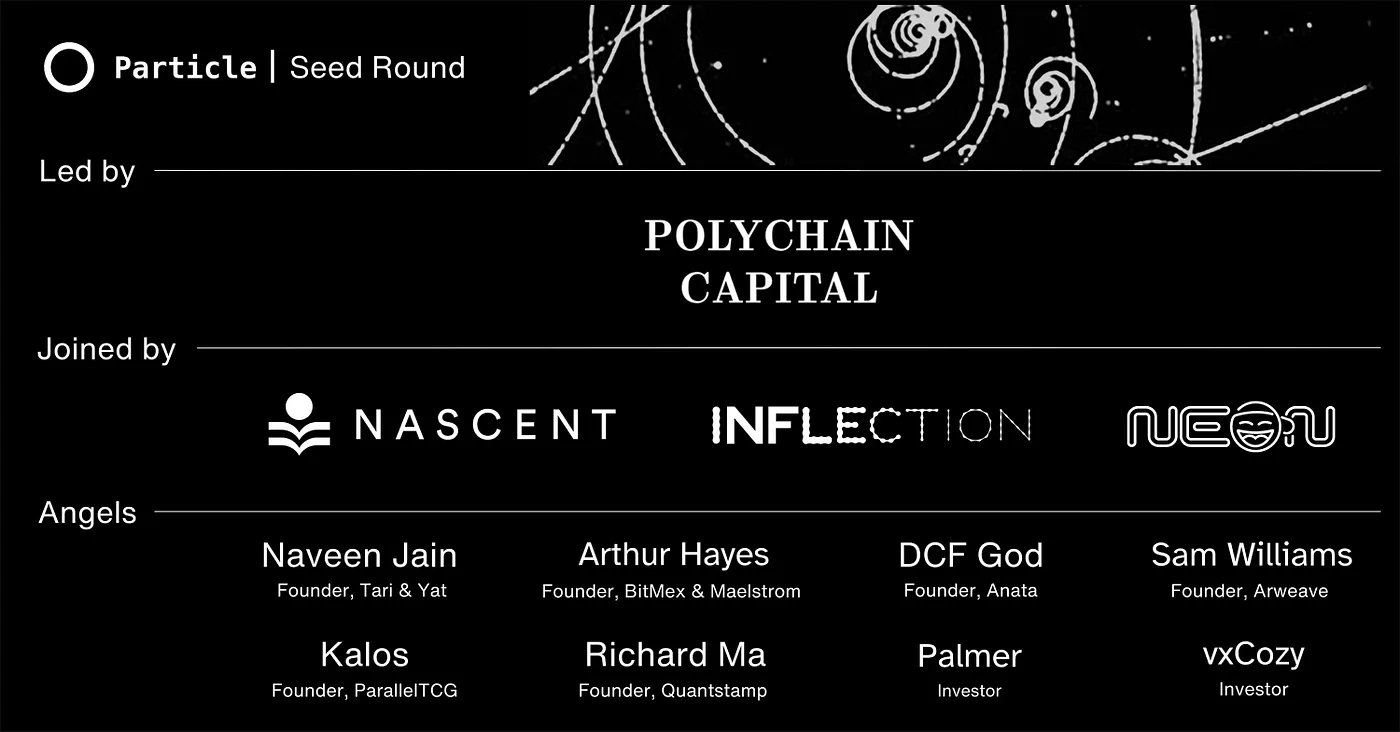위키 구독하기
Share wiki
Bookmark
Particle Trade
Particle Trade
Particle은 유동성 재스테이킹 프로토콜을 호스팅하는 플랫폼으로, 권한 없는 레버리지 거래 및 금리 스왑을 자체 레버리지 자동화 시장 조성자 (LAMM)를 통해 가능하게 합니다. [1]
개요
Particle의 LAMM은 Uniswap이 모든 토큰 거래를 위해 AMM을 대중화한 것과 유사하게 레버리지를 사용하여 ERC-20 토큰을 거래하도록 설계된 허가 없는 프로토콜입니다. 이는 유동성 제공자(LP)가 Uniswap v3와 같은 기존 AMM과 비교하여 일시적 손실 증가 없이 더 높은 수익을 얻을 수 있도록 보장합니다. LAMM에 공급된 유동성은 처음에는 AMM에서 스왑을 지원합니다. 레버리지 거래를 위해 차용될 때, 이 유동성은 스왑에 여전히 사용되는 것처럼 수익을 계속 얻고 유동성 재스테이킹을 통한 포지션 수수료를 얻습니다. 차용된 유동성은 회수하기 전에 최대 3일 동안 잠겨 있습니다. [2]
LAMM은 가격 오라클에 의존하지 않고 운영되므로, 각 레버리지 포지션마다 LP 포지션이 수학적으로 완전하게 만들어집니다. 이는 가격 오라클 조작과 관련된 위험을 제거합니다. 가격 기반 청산 메커니즘을 사용하는 프로토콜과 달리, LAMM은 단기 차입과 유사한 프리미엄 모델을 사용하여 불리한 가격 변동이 발생하더라도 청산 가능성을 줄입니다. 또한, LAMM은 기초 자산의 가격 변동으로부터 직접 손익을 도출하여 상대방 위험을 최소화하여 변동성이 큰 시장 상황에서도 잠재적인 양의 수익을 보장합니다. [2]
특징
현재 채용 중인 포지션
LAMM에서의 레버리지 거래는 이용 가능한 유동성에 따라 페어 토큰을 사용하여 ERC-20 토큰을 매수 또는 매도할 수 있도록 합니다. 레버리지 수준은 각 토큰 페어의 유동성 깊이에 따라 제한됩니다. 레버리지 포지션을 열려면 담보(collateral)와 프리미엄을 지불해야 합니다. 담보는 가격이 불리하게 움직일 경우 발생할 수 있는 최대 손실을 나타냅니다. 프리미엄은 이자 발생 비용을 충당하며, 포지션 청산 시 초과분은 환불됩니다. [3]
각 레버리지 포지션에는 스왑 수수료, 포지션 개설 수수료, 스왑 청산 수수료의 세 가지 수수료가 발생합니다. 이러한 수수료는 기본 AMM의 유동성 제공자(LP)에게 보상하며, 담보(collateral)에서 공제되고 손익 계산에 반영됩니다. 담보(collateral)의 2%에 해당하는 프리미엄은 선불로 지불되며, 기본 AMM의 스왑 활동에 따라 이자가 발생합니다. 프런트 엔드에는 이러한 이자 발생을 반영하는 시간당 차입 금리가 표시됩니다. 발생한 이자가 프리미엄을 초과하면 청산이 발생합니다. [3]
포지션 청산
프런트 엔드는 진입 가격, 현재 가격, 레버리지 비율, 발생 이자 및 수수료와 같은 요소를 기반으로 시뮬레이션된 손익(PnL) 계산을 제공합니다. 그러나 슬리피지에 대한 보호 기능이 있음에도 불구하고, 가격 변동으로 인해 포지션 청산 시 실현 손익이 약간 다를 수 있습니다. [4]
AMM의 수학적 특성으로 인해 스왑 후 결과 가격 지점을 정확하게 추적하는 것이 어려울 수 있습니다. 따라서 포지션이 청산될 때, 포지션 토큰의 소량의 잔액이 남을 수 있습니다 (예: 트레이더가 USDC를 사용하여 WETH를 롱 포지션으로 잡았을 경우 WETH). 이 잔액은 포지션 청산 시 트레이더의 지갑으로 반환됩니다. 그 후 트레이더는 이를 원래 토큰으로 다시 전환할 수 있습니다. [4]
청산
LAMM 프로토콜은 기간 한정 차용과 유사한 프리미엄 모델로 운영됩니다. 청산은 포지션에 발생한 이자가 선불 프리미엄을 초과하거나, LP가 유동성을 회수한 후 3일이 지난 경우 발생합니다. 이러한 조건이 충족될 때까지는 토큰 가격 변동의 악영향을 받지 않습니다. [5]
이자 발생률은 기본 AMM과 일치합니다. 프런트엔드는 청산 가능하거나 임박한 모든 포지션을 나열하는 청산 페이지를 제공합니다. 누구든지 이러한 포지션에 대한 청산자 역할을 할 수 있으며, 포지션 프리미엄의 5%를 보상으로 받습니다. [5]
청산 후, LP는 차용 기간 동안 누적된 차용 유동성과 스왑 수수료를 회수합니다. 차용자는 청산 이벤트 가격으로 실현된 손익(PnL)을 받지만, 청산 보상이 차감됩니다. [5]
Duo Exchange
Duo Exchange는 LP(유동성 제공자)들이 에어드랍 포인트 또는 수익률을 높일 수 있는 수익률 스왑 프로토콜입니다. 중앙 집중식 Vault 계약은 모든 LP(유동성 제공자)의 유동성을 통합하고 각 LP(유동성 제공자)의 선택에 따라 포인트 또는 수익률을 배분합니다. 각 LP(유동성 제공자)가 Duo Exchange에 네이티브 ETH(이더리움), WETH(랩드 이더리움), 또는 USDB를 예치하면 동일한 양의 Duo Restaking Token(DRT) (예: DETH 또는 DUSD)이 생성됩니다. 이러한 DRT는 대출 플랫폼에서 담보로 사용하거나, 통화 스왑 또는 레버리지 거래 활동과 같은 다양한 프로토콜에서 활용될 수 있습니다. 인출 시 LP(유동성 제공자)는 원금을 1:1 비율로 상환하기 위해 지갑에 동일한 양의 DRT가 있는지 확인해야 합니다. [6][7]
포인트-수익률 스왑
듀오 거래소의 포인트-수익률 스왑은 LPs(유동성 제공자)가 부스트된 포인트 또는 부스트된 수익률 중에서 선택할 수 있도록 합니다. 두 유동성(유동성) 흐름은 단일 금고 계약 내에서 처리됩니다. 금고에는 두 가지 유형의 유동성(유동성) 제공이 있습니다: LP1(유동성 제공자)과 LP2(유동성 제공자)입니다. LP1(유동성 제공자)은 수익률을 포기하는 대신 부스트된 포인트를 받기 위해 유동성을 제공하는 반면, LP2(유동성 제공자)는 포인트를 포기하는 대신 부스트된 수익률을 받기 위해 유동성을 제공합니다. [8]
LP1(유동성 제공자)는 LP1(유동성 제공자)과 LP2(유동성 제공자)의 원금 모두가 특히 LP1(유동성 제공자)을 위해 포인트를 생성하기 때문에 더 높은 포인트 비율을 누립니다. 반대로, LP2(유동성 제공자)는 LP1(유동성 제공자)과 LP2(유동성 제공자)의 원금 모두가 특히 LP2(유동성 제공자)을 위해 수익률을 생성하기 때문에 더 높은 수익률을 받습니다. [8]
변동-고정 수익률 스왑
듀오 거래소의 변동-고정 수익률 스왑을 통해 LP는 만기까지 고정 수익률과 원천 수익률보다 높을 수 있는 변동 수익률 중에서 선택할 수 있습니다. 두 가지 옵션 모두 단일 볼트 계약 내에 포함되어 유동성 흐름을 모두 수용합니다. [9]
- 유동성 흐름: 듀오 거래소의 볼트는 유동성 제공의 두 가지 방법을 지원합니다: LP1과 LP2. LP1은 만기까지 고정 수익률을 얻기 위해 유동성을 잠급니다. 반면 LP2는 변동 수익률을 선택하며, 시간이 지남에 따라 원천 수익률을 초과하는 경우가 많습니다. LP1이 낮은 고정 수익률로 잠금을 설정하기 때문에 LP2는 잠재적으로 더 높은 수익률의 이점을 누립니다. LP1이 얻은 초과 수익률은 LP2로 향합니다. 또한, LP1 포지션을 개설하면 LP2에 지불되는 포지션 수수료가 발생합니다. [9]
- 고정 수익률: 수익률이 변동하는 환경에서는 미리 특정 수익률을 고정하는 것이 유리합니다. 잠금에 사용할 수 있는 수익률은 시장 상황에 따라 결정되므로 LP1은 자산을 할인된 가격으로 효과적으로 구매하고 만기에 자산에 대한 완전한 접근 권한을 얻을 수 있습니다. LP1은 만기 전에 청산할 수 있지만, 전체 수익률을 받지는 못합니다. 만기되지 않은 부분은 볼트에서 처리되며, 남은 수익률은 모든 LP2에 분배됩니다. [9]
- 변동 수익률: LP2는 시간이 지남에 따라 원천 수익률보다 높아지는 경향이 있는 변동 수익률의 이점을 누립니다. 이러한 이점은 LP1과 LP2 모두 수익률 생성에 기여하기 때문에 발생합니다. LP1은 총 수익률의 더 작은 부분을 고정(순간 추정치보다 낮은 수익률 선택)하여 LP2에 더 많은 수익률을 남겨둡니다. 또한, LP2는 LP1로부터 포지션 수수료를 받습니다. LP2는 언제든지 청산할 수 있는 유연성을 유지하며, 시간 경과에 따라 총 LP2 원금에 대한 자체 원금 비율에 비례하는 수익률과 포지션 수수료를 받습니다. [9]
PTC 토큰

- 커뮤니티: 55%
- 투자자: 24%
- 기여자: 21%
파트너십
투자자
2024년 1월, Particle은 허가 없는 레버리지 거래를 용이하게 하기 위해 Polychain Capital(폴리체인 캐피탈)이 주도하는 시드 라운드 투자를 유치했습니다. Nascent, Inflection, Neon DAO, Naveen Jain, Arthur Hayes(아서 헤이즈), DCF God, Sam Williams(샘 윌리엄스), Kalos, Richard Ma, Palmer(팔머), vxCozy 및 기타 여러 파트너들이 이 여정을 지원했습니다. [11]

블래스트(Blast)
2024년 1월 17일, Particle Labs는 Particle이 블래스트(Blast) 블록체인 기반으로 구축되고 블래스트(Blast)의 빅뱅 경쟁에 참여하여 커뮤니티 기금에 사용될 개발자 에어드롭을 수상할 것이라고 발표했습니다.
잘못된 내용이 있나요?
